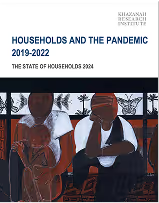
- Due to Covid-19, social and physical distancing is likely the ‘new normal’ for the foreseeable future. Certain work arrangements, such as working from home (WFH), might persist too. Using estimates from the Department of Statisics (DOS) and Dingel and Neiman (2020), this paper attempts to identify the prevalence and viability of WFH for workers in Malaysia.
- WFH is uncommon among Malaysia’s most vulnerable workers, the self-employed. Recent findings indicate that only one in four self-employed workers worked from home, while close to half of them lost their jobs during the Covid-19 crisis. Coupled with the lack of social protection and measures to assist them during this crisis, the vulnerabilities experienced by the self-employed have been further amplified.
- WFH is mostly possible for less than 30% of workers in the country. This working arrangement is biased towards high-skill occupations and selected high-paying sectors, suggesting a potential worsening of inequality during the crisis as lower-paid economic activities and jobs could not simply continue operations via WFH.
- To work from home, workers need to have the resources to do so. Limited household access to fixed broadband, in addition to the lack of mobile (unattached to physical workplace) computer hardware and internet access provided by employees further limits the ability to work from home.
















